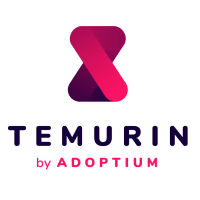
In this tutorial, we will show you how to install Adoptium Temurin on AlmaLinux 8. For those of you who didn’t know, Eclipse Temurin is a project that focuses on building codes and processes that support the building of runtime binaries and the associated technologies used across the Java ecosystem.
This article assumes you have at least basic knowledge of Linux, know how to use the shell, and most importantly, you host your site on your own VPS. The installation is quite simple and assumes you are running in the root account, if not you may need to add ‘sudo‘ to the commands to get root privileges. I will show you the step-by-step installation of Temurin on an AlmaLinux 8. You can follow the same instructions for Fedora, RHEL, CentOS, and Rocky Linux distributions.
Prerequisites
- A server running one of the following operating systems: AlmaLinux 8, CentOS, and Rocky Linux 8.
- It’s recommended that you use a fresh OS install to prevent any potential issues.
- SSH access to the server (or just open Terminal if you’re on a desktop).
- A
non-root sudo useror access to theroot user. We recommend acting as anon-root sudo user, however, as you can harm your system if you’re not careful when acting as the root.
Install Adoptium Temurin on AlmaLinux 8
Step 1. First, let’s start by ensuring your system is up-to-date.
sudo dnf clean all sudo dnf update
Step 2. Installing Adoptium Temurin.
By default, Adoptium is not available on the AlmaLinux 8 base repository. Now we run the following command to download the latest version of Adoptium Temurin to your system:
wget https://github.com/adoptium/temurin17-binaries/releases/download/jdk-17.0.2%2B8/OpenJDK17U-jdk_x64_linux_hotspot_17.0.2_8.tar.gz
Next, extract the downloaded file:
tar -xvf OpenJDK17U-jdk_x64_linux_hotspot_17.0.2_8.tar.gz sudo mv jdk-17.0.2+8/ /opt/jdk-17
Step 3. Configure Temurin.
First, we change the directory to the /opt/ folder and export the Environment variables:
nano ~/.bashrc
Add the following file:
export JAVA_HOME=/opt/jdk-17 export PATH=$PATH:$JAVA_HOME/bin
Next, source the variables to be accessible on the system:
source ~/.bashrc
Verify the set PATH:
$ echo $JAVA_HOME /opt/jdk-17
After that, verify Java installation using the command below:
java --version
Finally, set the default Java version:
sudo alternatives --install /usr/bin/java java /opt/jdk-17/bin/java 1
Step 4. Test Temurin OpenJDK 17.
Once successfully installed, now we create a sample file as below:
cat > hello_world.java <<EOF
public class helloworld {
public static void main(String[] args) {
System.out.println("Hello World! By idr00t");
}
}
EOF
Save and close the file, then compile it:
java hello_world.java
Output:
Hello World! By idr00t
Congratulations! You have successfully installed Temurin. Thanks for using this tutorial for installing the Adoptium Temurin on your AlmaLinux 8 system. For additional help or useful information, we recommend you check the official Adoptium website.